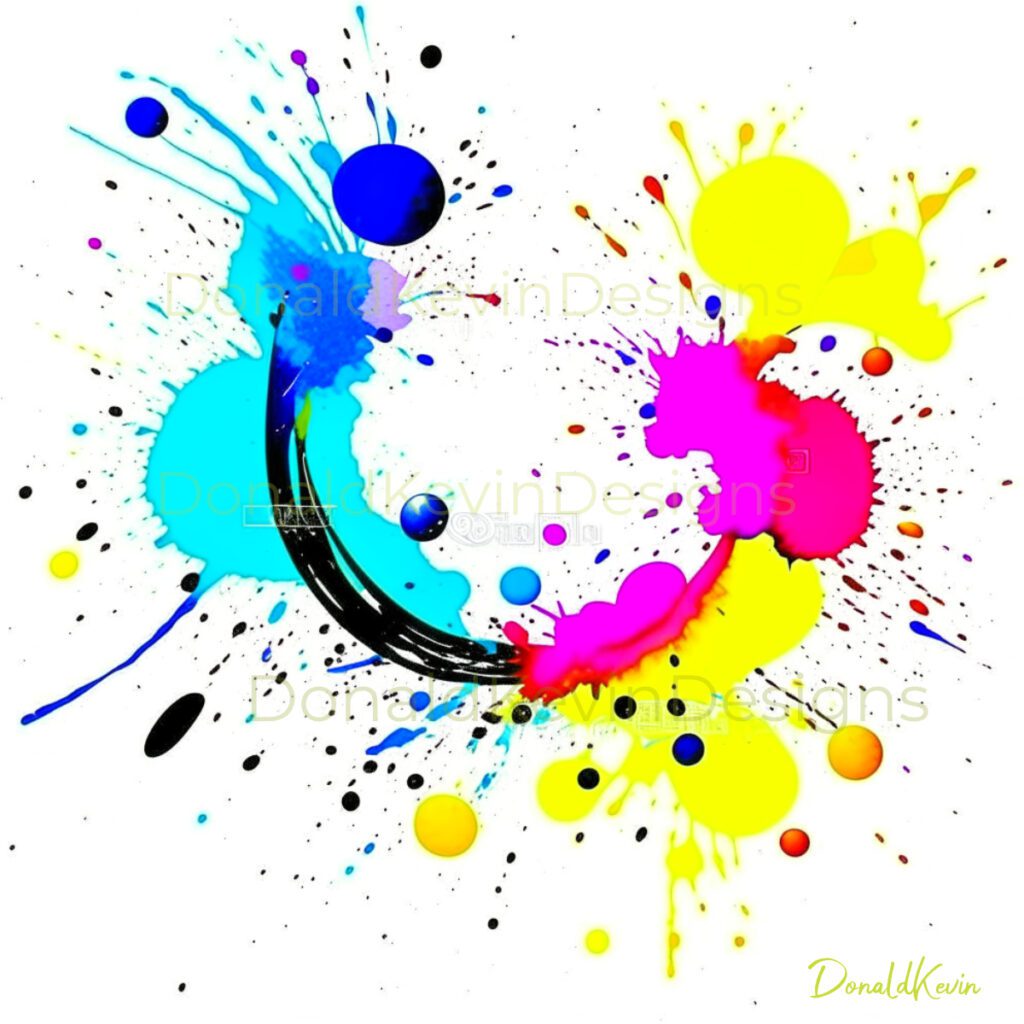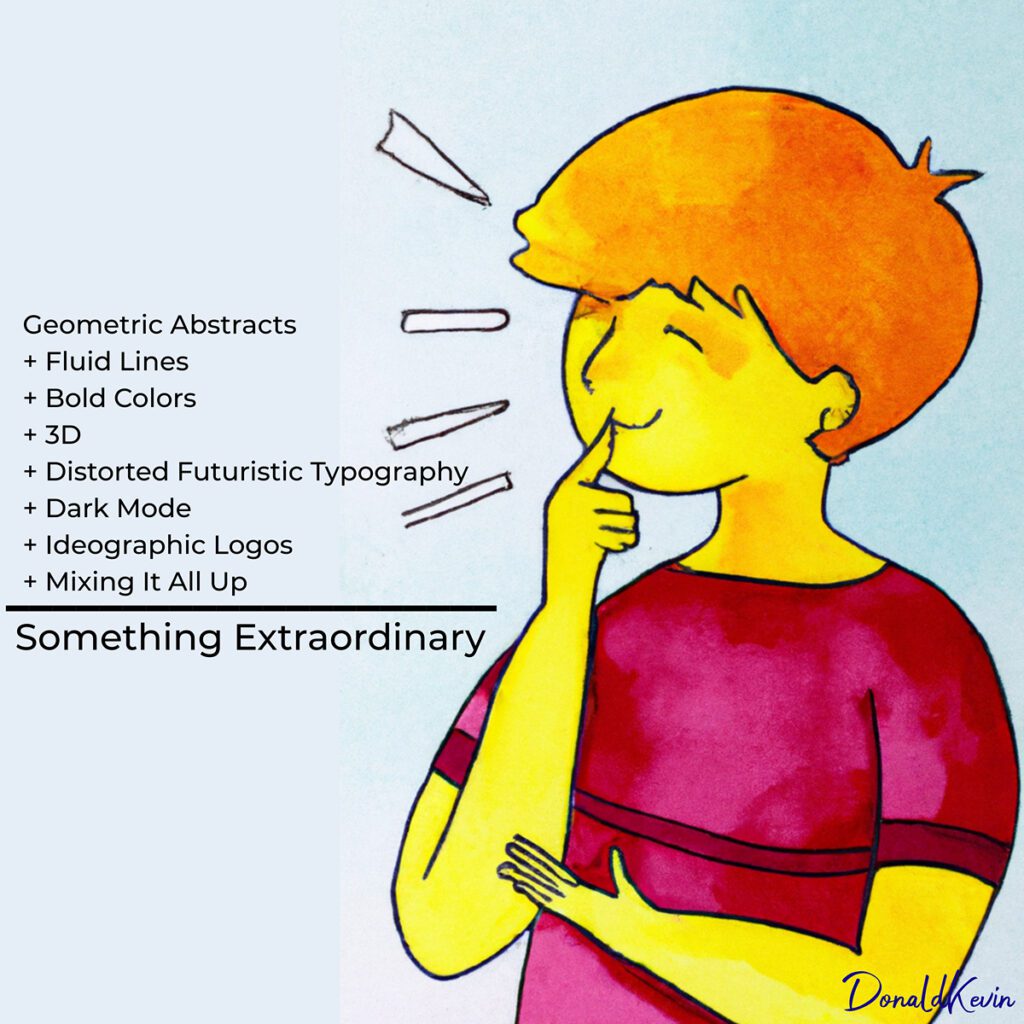5 Tips For Starting Your Graphic Design Journey
 Hey there and welcome to DonaldKevin.com. Today we are going to look at 5 Tips For Starting Your Graphic Design Journey. It is my sincerest wish that these tips inspire you, whether you’re just starting out or are just in a slump (as happens to all of us). I have loved designing since I was a kid. I’ve enjoyed drafting, landscape and interior design, and graphic design is another part of the design journey. Graphic design is a fascinating field that offers endless creative opportunities. Whether you’re an aspiring designer or just starting out, this article aims to provide inspiring tips and tricks to help you embark on your graphic design journey. By encouraging self-confidence and practice, you can improve your skills and excel in this exciting profession. So, without further ado, let’s delve into the world of graphic design and unlock your potential.
Hey there and welcome to DonaldKevin.com. Today we are going to look at 5 Tips For Starting Your Graphic Design Journey. It is my sincerest wish that these tips inspire you, whether you’re just starting out or are just in a slump (as happens to all of us). I have loved designing since I was a kid. I’ve enjoyed drafting, landscape and interior design, and graphic design is another part of the design journey. Graphic design is a fascinating field that offers endless creative opportunities. Whether you’re an aspiring designer or just starting out, this article aims to provide inspiring tips and tricks to help you embark on your graphic design journey. By encouraging self-confidence and practice, you can improve your skills and excel in this exciting profession. So, without further ado, let’s delve into the world of graphic design and unlock your potential.
1️⃣ Embrace the Basics Of Graphic Design:
A. Understand Color Theory: Color plays a vital role in graphic design, as it evokes emotions and establishes visual hierarchy. Familiarize yourself with the color wheel, learn about color schemes, and experiment with different combinations to create visually appealing designs.
Color plays a vital role in graphic design, as it evokes emotions and establishes visual hierarchy. Familiarize yourself with the color wheel, learn about color schemes, and experiment with different combinations to create visually appealing designs.
B. Typography Matters: The choice of fonts can make or break a design. Explore various typography styles, understand the importance of readability, and learn how to pair different fonts effectively. Experiment with sizes, weights, and styles to create visually engaging typographic compositions.
The choice of fonts can make or break a design. Explore various typography styles, understand the importance of readability, and learn how to pair different fonts effectively. Experiment with sizes, weights, and styles to create visually engaging typographic compositions.
C. Grasp Composition and Layout: Mastering composition and layout is crucial to create aesthetically pleasing designs. Study the rule of thirds, balance, and visual flow. Experiment with grids and guides to organize elements within your designs effectively. Practice creating harmonious compositions to strengthen your design skills.
Mastering composition and layout is crucial to create aesthetically pleasing designs. Study the rule of thirds, balance, and visual flow. Experiment with grids and guides to organize elements within your designs effectively. Practice creating harmonious compositions to strengthen your design skills.
2️⃣Get Inspired By Graphic Design:
A. Curate a Mood Board:
Create a collection of visual inspirations through a mood board. Collect design samples, illustrations, typography, and color palettes that resonate with you. Use mood boards to fuel your creativity, explore different styles, and discover unique design approaches.
B. Study Influential Designers:
To develop your own style, it’s essential to learn from the industry’s giants. Research and study influential graphic designers who have left a mark on the field. Analyze their work, understand their design principles, and draw inspiration from their techniques.

J.C. Leyendecker. Early 20th Century Art Deco Artist Extraordinaire
3️⃣Expand Your Skill Set In Graphic Design:
A. Learn Essential Design Software: Get acquainted with industry-standard design software, such as Adobe Photoshop, Illustrator, and InDesign. I highly recommend How To Graphic Design: The Course Of Fundamentals to help in learning the key features of these tools and develop proficiency in utilizing them for your design projects.
Get acquainted with industry-standard design software, such as Adobe Photoshop, Illustrator, and InDesign. I highly recommend How To Graphic Design: The Course Of Fundamentals to help in learning the key features of these tools and develop proficiency in utilizing them for your design projects.
B. Develop Illustration Skills: Illustrations breathe life into designs and offer endless creative possibilities. Practice sketching, learn vector illustration techniques, and explore digital painting. These skills will enhance your ability to create unique and personalized designs that stand out.
Illustrations breathe life into designs and offer endless creative possibilities. Practice sketching, learn vector illustration techniques, and explore digital painting. These skills will enhance your ability to create unique and personalized designs that stand out.
4️⃣Seek Feedback and Collaborate With Other Graphic Designers:
A. Join Design Communities:![]() Immerse yourself in design communities, both online and offline. Share your work, seek constructive criticism, and engage with fellow designers. Collaborate on projects to gain exposure to different perspectives and approaches, allowing you to grow and evolve as a designer.
Immerse yourself in design communities, both online and offline. Share your work, seek constructive criticism, and engage with fellow designers. Collaborate on projects to gain exposure to different perspectives and approaches, allowing you to grow and evolve as a designer.
B. Embrace Feedback:![]() Constructive feedback is essential for growth. Embrace feedback with an open mind and use it as an opportunity to learn and improve your skills. Analyze the suggestions received and implement them in your designs, gradually refining your style and techniques.
Constructive feedback is essential for growth. Embrace feedback with an open mind and use it as an opportunity to learn and improve your skills. Analyze the suggestions received and implement them in your designs, gradually refining your style and techniques.
5️⃣Emphasize Continuous Learning Of Graphic Design:
A. Stay Up to Date: Graphic design is an ever-evolving field. Stay updated with the latest trends, design techniques, and industry news. Follow design blogs, subscribe to design magazines, and attend conferences and workshops to keep expanding your knowledge and staying ahead in the game.
Graphic design is an ever-evolving field. Stay updated with the latest trends, design techniques, and industry news. Follow design blogs, subscribe to design magazines, and attend conferences and workshops to keep expanding your knowledge and staying ahead in the game.
B. Practice, Practice, Practice: And practice some more! Improvement comes with practice. Set aside dedicated time, even if it’s just a few hours a week, to refine your skills. Engage in personal projects, challenge yourself with design prompts, and continuously experiment with different styles and techniques.
And practice some more! Improvement comes with practice. Set aside dedicated time, even if it’s just a few hours a week, to refine your skills. Engage in personal projects, challenge yourself with design prompts, and continuously experiment with different styles and techniques.
Summing It Up:
 Embarking on a graphic design journey can be both exciting and overwhelming. However, with the right mindset, practice, and a dash of creativity, you can progress from zero to hero in no time. By embracing the basics, seeking inspiration, expanding your skill set, seeking feedback, and emphasizing continuous learning, you’ll be well on your way to becoming a successful graphic designer. Remember, confidence and practice are the keys to unlocking your true potential. Now, go forth, stay groovy, and create! And one more thing…Thank you for visiting DonaldKevin.com
Embarking on a graphic design journey can be both exciting and overwhelming. However, with the right mindset, practice, and a dash of creativity, you can progress from zero to hero in no time. By embracing the basics, seeking inspiration, expanding your skill set, seeking feedback, and emphasizing continuous learning, you’ll be well on your way to becoming a successful graphic designer. Remember, confidence and practice are the keys to unlocking your true potential. Now, go forth, stay groovy, and create! And one more thing…Thank you for visiting DonaldKevin.com


 While it is essential to have a basic understanding of design principles, it is equally necessary to know when and how to break them. In graphic design, rules are meant to be challenged, allowing designers to explore new territories and create visually stunning pieces. By embracing chaos and incorporating unconventional elements, designers can create designs that stand out from the crowd.
While it is essential to have a basic understanding of design principles, it is equally necessary to know when and how to break them. In graphic design, rules are meant to be challenged, allowing designers to explore new territories and create visually stunning pieces. By embracing chaos and incorporating unconventional elements, designers can create designs that stand out from the crowd. While breaking the rules in graphic design can lead to innovative and memorable creations, it is important to strike a balance. It is crucial to understand the fundamental principles of design before intentionally breaking them. This knowledge enables designers to make informed decisions and ensures that their work remains visually appealing and effective. By consciously bending the rules rather than completely disregarding them, designers can create designs that captivate the audience while still conveying the desired message.
While breaking the rules in graphic design can lead to innovative and memorable creations, it is important to strike a balance. It is crucial to understand the fundamental principles of design before intentionally breaking them. This knowledge enables designers to make informed decisions and ensures that their work remains visually appealing and effective. By consciously bending the rules rather than completely disregarding them, designers can create designs that captivate the audience while still conveying the desired message.

 The grid is a fundamental principle of graphic design, providing structure and organization. However, pushing its boundaries can result in groundbreaking designs that capture attention. By breaking free from the confines of a strict grid, designers can create compositions that are visually dynamic and unexpected. This approach allows for greater creativity and experimentation, leading to designs that break the mold and become iconic. Embracing asymmetry, overlapping elements, and unconventional layouts can help designers push the boundaries of the grid and create designs that are truly remarkable.
The grid is a fundamental principle of graphic design, providing structure and organization. However, pushing its boundaries can result in groundbreaking designs that capture attention. By breaking free from the confines of a strict grid, designers can create compositions that are visually dynamic and unexpected. This approach allows for greater creativity and experimentation, leading to designs that break the mold and become iconic. Embracing asymmetry, overlapping elements, and unconventional layouts can help designers push the boundaries of the grid and create designs that are truly remarkable. Negative space, often overlooked, is an excellent opportunity for breaking graphic design rules. By intentionally allowing blank spaces in a design, designers can create a sense of balance, simplicity, and elegance. Negative space highlights the main elements of a design and guides the viewer’s attention, resulting in visually striking and iconic designs.
Negative space, often overlooked, is an excellent opportunity for breaking graphic design rules. By intentionally allowing blank spaces in a design, designers can create a sense of balance, simplicity, and elegance. Negative space highlights the main elements of a design and guides the viewer’s attention, resulting in visually striking and iconic designs.
 Breaking the rules in graphic design is a powerful way to create iconic designs that leave a lasting impression. By pushing the boundaries of traditional design principles, designers can explore new territories, experiment with unconventional elements, and captivate their audience with visually stunning artwork. Through typography techniques, daring color choices, strategic use of negative space, and incorporating mixed media, designers can create designs that defy expectations and make a significant impact. So, go ahead, break the graphic design rules, and unleash your creativity to create iconic designs that stand the test of time. Thank you so much for taking the time to stop by today. Stay Groovy and CREATE!
Breaking the rules in graphic design is a powerful way to create iconic designs that leave a lasting impression. By pushing the boundaries of traditional design principles, designers can explore new territories, experiment with unconventional elements, and captivate their audience with visually stunning artwork. Through typography techniques, daring color choices, strategic use of negative space, and incorporating mixed media, designers can create designs that defy expectations and make a significant impact. So, go ahead, break the graphic design rules, and unleash your creativity to create iconic designs that stand the test of time. Thank you so much for taking the time to stop by today. Stay Groovy and CREATE! Hey there! Donald Kevin here, thank you for visiting, and welcome to “Unleashing Creativity: Graphic Design Trends Fall 2023 Part 2.” Are you ready to step into the future? Well, buckle up because in this week’s blog post, we are diving deep into the exciting world of graphic design trends for Fall 2023!
Hey there! Donald Kevin here, thank you for visiting, and welcome to “Unleashing Creativity: Graphic Design Trends Fall 2023 Part 2.” Are you ready to step into the future? Well, buckle up because in this week’s blog post, we are diving deep into the exciting world of graphic design trends for Fall 2023! 




